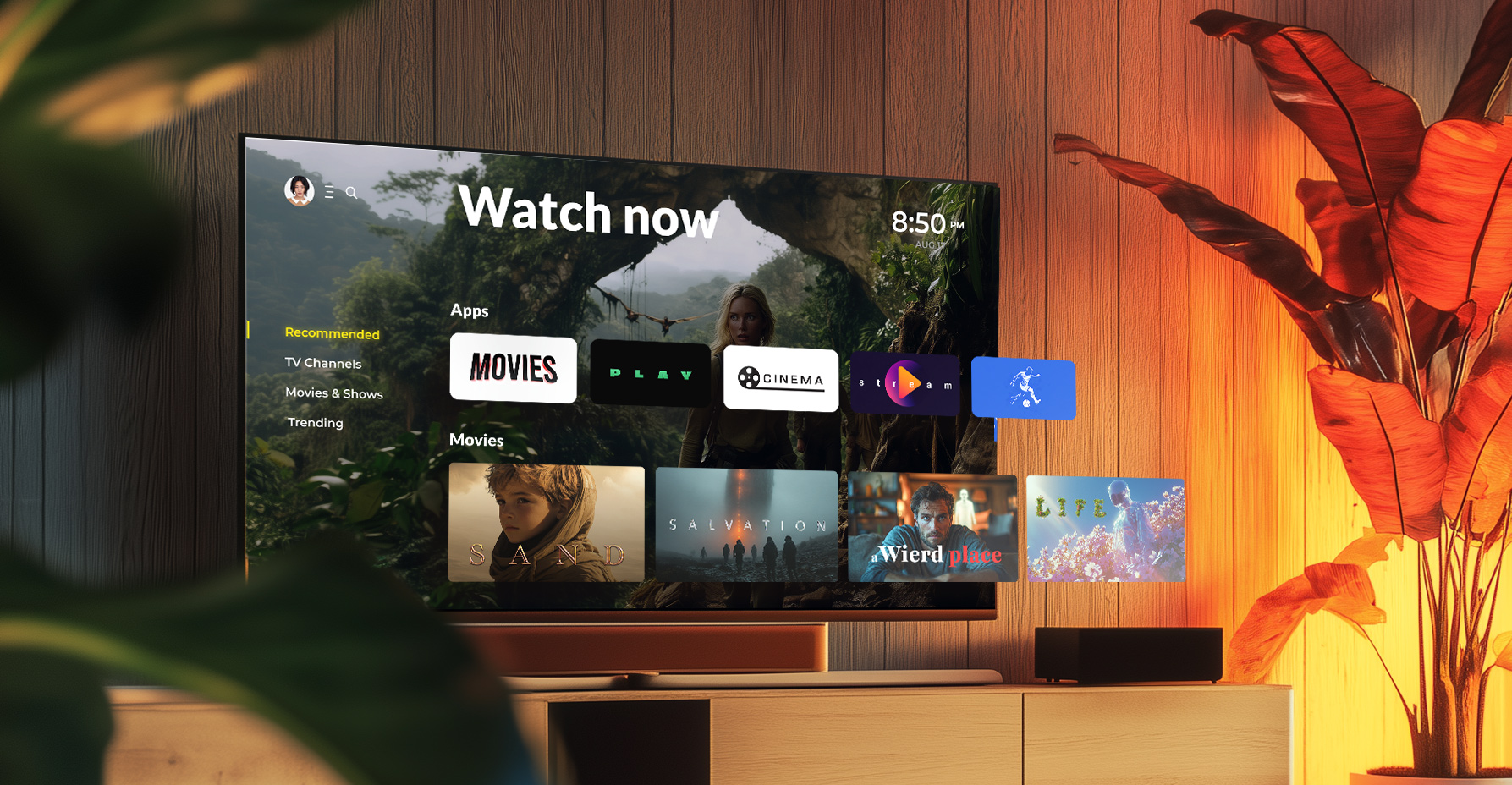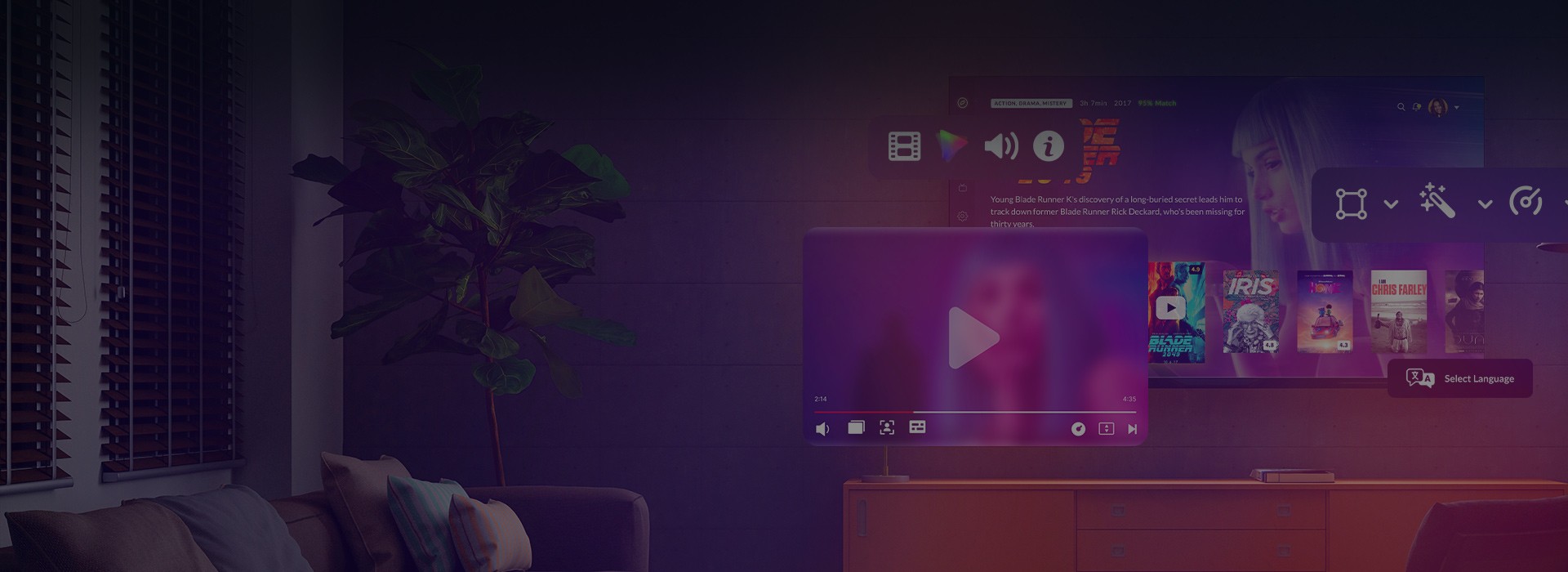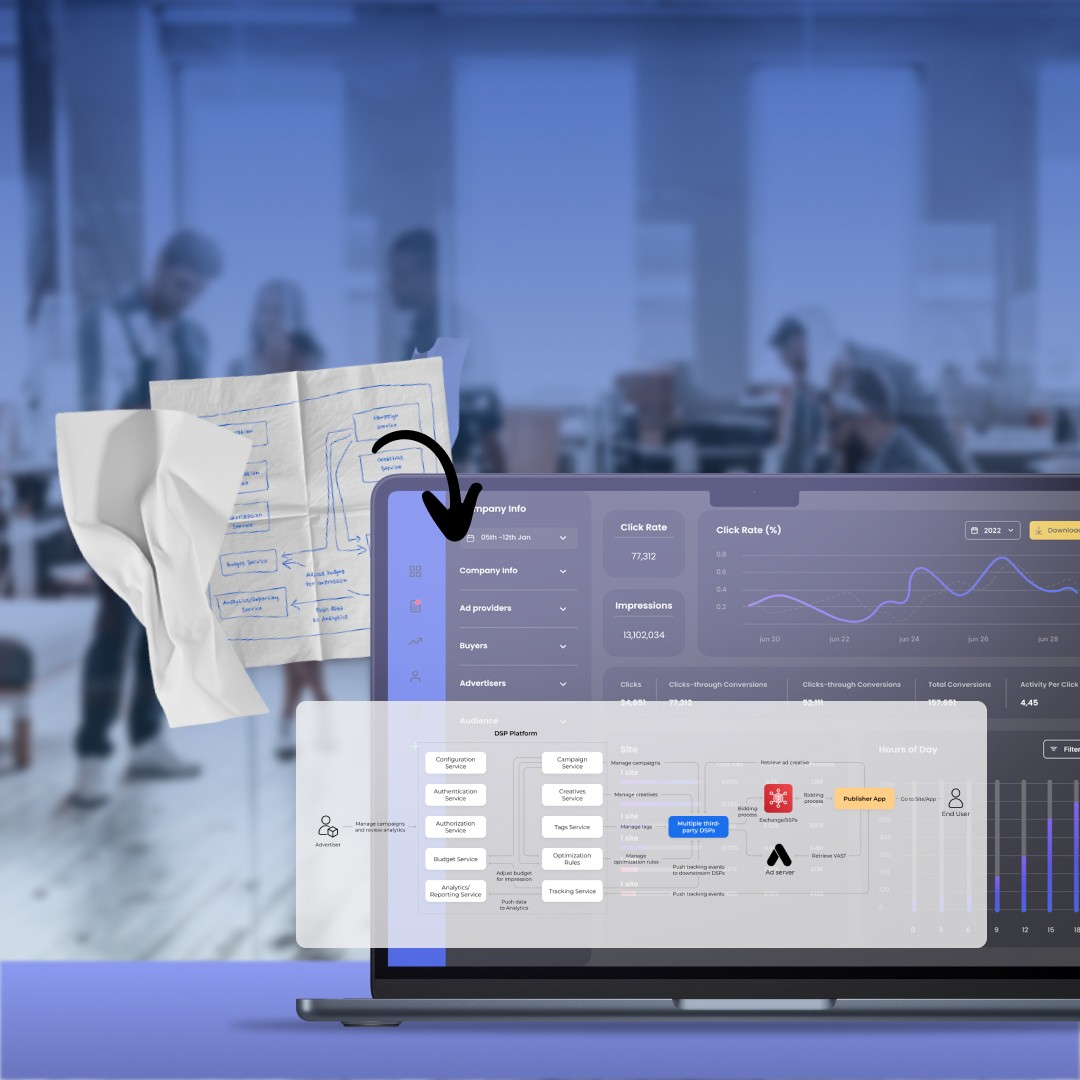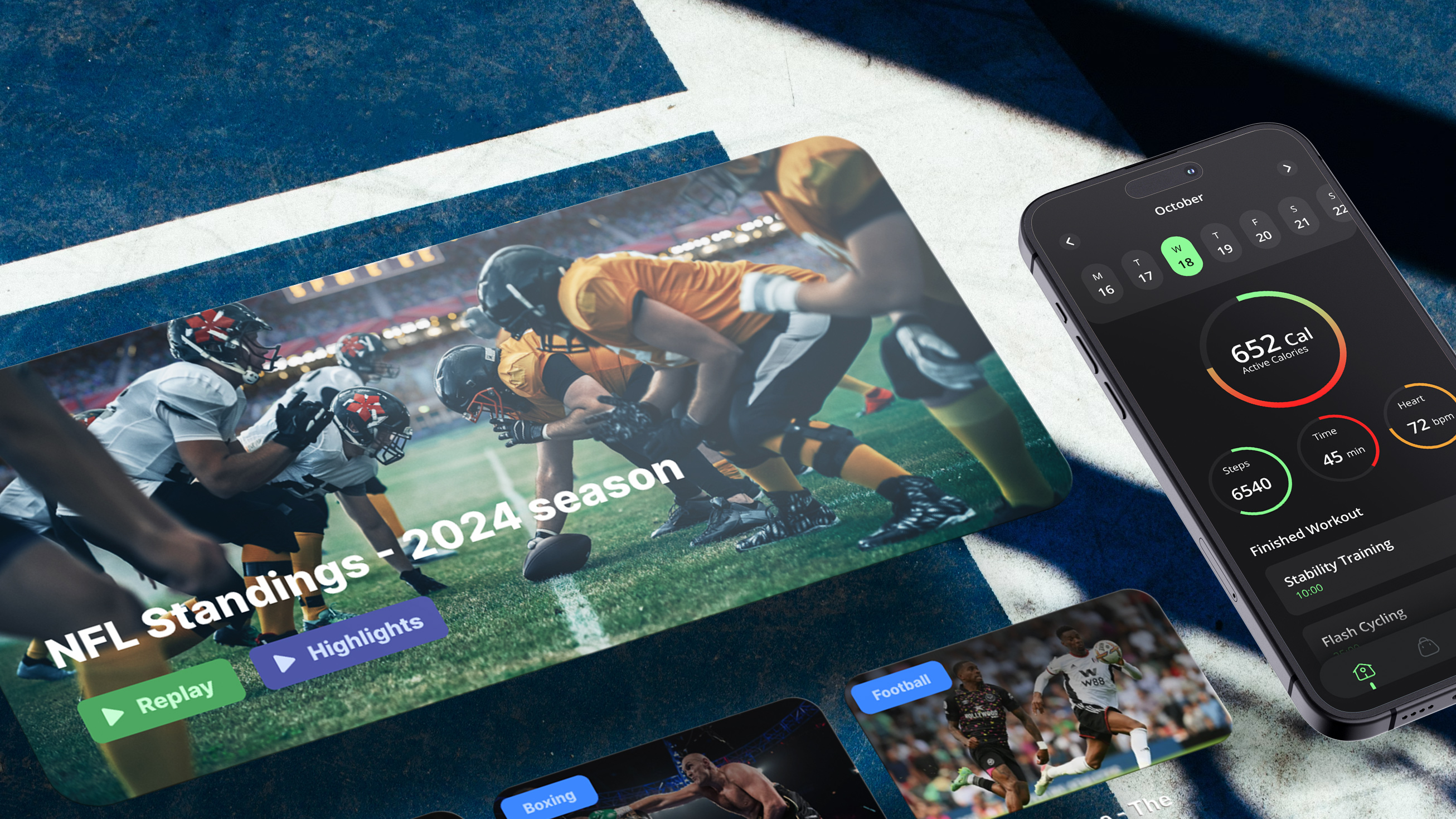Streaming isn’t what it used to be. In 2025, content is flying at us from every direction — Netflix on your phone, live sports in 4K on your hotel TV, YouTube on your fridge (yes, really). But behind the scenes? Two very different engines are powering this video revolution: IPTV and OTT.
They might look similar on the surface — both deliver content to your screen — but don’t be fooled. One travels a tightly controlled highway with VIP lanes and guaranteed quality. The other? It’s more like a fast-and-loose freeway, open to everyone but full of surprises.
If you’re building a video platform or planning your next big move in digital content, knowing the OTT vs IPTV difference isn’t just helpful — it’s essential. It’s the foundation of your tech stack, your user experience, and ultimately, your business model.
In this guide, we’ll ditch the jargon and get real about what makes IPTV and OTT tick. What makes each shine? Where do they fall short? And more importantly, which one should you bet on?
IPTV unboxed: making sense of internet protocol television
So, you’ve heard about IPTV but can’t quite picture it? Think of IPTV (Internet Protocol Television) as cable TV’s smarter, cooler sibling — streaming TV channels over internet protocols rather than traditional satellite or cable methods. But unlike your usual streaming, IPTV doesn’t battle for bandwidth with your emails or Zoom calls. It rides smoothly on a dedicated, managed network — no buffering dramas here.
This controlled pipeline means you get guaranteed high-quality streams, delivering crystal-clear images and pristine audio every time. Curious about how exactly this magic happens? Dive deeper here.
What’s under the hood?
IPTV services run on private, operator-managed networks, usually handled end-to-end by a telecom or cable provider. But to access the service, users typically need a dedicated hardware device, most commonly a set-top box (STB). This device decodes the streams and delivers them directly to your screen, often with a clean, intuitive interface for browsing channels, catching up on shows, or diving into on-demand libraries.
Simplify your IPTV experience with a smarter STB
No more app-hopping or input-switching — this set-top box app does it all: channel tuning, video decoding, DVR, program guides, and more. It’s the powerhouse behind a seamless IPTV setup.
Curious about what’s under the hood? Explore our custom STB app development service and see how we bring IPTV platforms to life.

But can you watch IPTV on mobile without an STB?
Short answer: yes, but it depends on the setup. While traditional IPTV services rely heavily on set-top boxes (STBs) for delivering content through a managed network, many modern IPTV providers are extending access to mobile and smart devices through companion apps, as long as you’re within their network or using their authenticated service.
For example, some operators offer a “TV Everywhere” experience, where you can stream live TV or on-demand content on your smartphone or tablet using the same IPTV account — no STB required. However, behind the scenes, it’s still tightly controlled by the operator and often only works on approved networks or regions.
In other words, IPTV on mobile is possible, but it’s not OTT — it’s an extension of the operator-managed ecosystem, not a free-for-all over the open internet.
Why IPTV stands out
IPTV isn’t just reliable; it’s interactive. Subscribers get perks like pausing live TV, rewinding shows, and seamlessly choosing on-demand movies. While not as flashy or experimental as OTT, IPTV’s strength lies in its unbeatable consistency and quality, ideal for premium content where interruptions just aren’t an option.
Ready to dive deeper into how OTT can revolutionize your video offerings?
Let’s explore together. From set-top box apps to full IPTV ecosystems, we’ve done it all. Check out our IPTV development services — or dive into this real-world IPTV platform case to see the results in action.

IPTV in the real world
Let’s bring it down to earth for a second. Imagine you’re rolling out a new TV service as part of a bundle from a telecom provider. The user gets a plug-and-play Android TV set-top box, connects it to their internet, and — boom — they’re watching live HD and 4K channels, browsing an on-demand library, recording shows to the cloud, and rewinding live TV like it’s second nature. All of it just works — smooth, stable, and fast.
Now, behind that “it just works” experience is a lot of moving parts, especially on the product side. From seamless live channel delivery to intuitive navigation and performance-tuned playback, every detail matters when you’re trying to win (and keep) subscribers.
That’s exactly the kind of solution we’ve built at Oxagile. We worked with a telecom operator to develop a custom Android TV STB app, tailored for reliability, performance, and user-centric features like catch-up TV, cloud DVR, and deep personalization.
OTT explained: streaming without boundaries
Ever binge-watched your favorite show on Netflix or caught up on trending videos via YouTube? Then you’ve already tasted the magic of OTT (over-the-top) streaming. Simply put, OTT delivers video content directly over the open internet — no cable subscriptions, no dedicated networks, just pure freedom.
No boxes, no boundaries
OTT doesn’t chain you to a specific box or provider. It’s as flexible as streaming gets. Watch on your smartphone during lunch, switch to your Smart TV at home, or sneak in episodes on your tablet while commuting. If there’s a screen and internet access, OTT is ready to roll.
But with great freedom comes great unpredictability. Since OTT relies on public internet pathways, your streaming quality can vary — smooth HD today, buffering battles tomorrow. Yet, with smart technology like adaptive bitrate streaming, OTT cleverly adjusts video quality to keep your viewing experience as stable as possible.
Interaction, personalized
OTT isn’t just flexible — it’s deeply interactive and personal. Imagine custom-tailored recommendations, interactive viewing features like polls or live chats, and innovative extras like second-screen experiences. OTT platforms constantly push boundaries, turning passive viewers into engaged, active participants. Curious about what cutting-edge interactivity looks like in practice? Check out Oxagile’s examples.
Global reach, niche power
OTT is your ticket to reaching global audiences without the heavy lifting of regional cable deals. Whether you’re launching a niche horror film streaming platform or broadcasting international sports, OTT lets you scale quickly and economically, tapping into dedicated communities wherever they are.
Real-world OTT: Oxagile’s success stories
- White-label OTT solution: Oxagile helped transform a ready-to-launch OTT platform for pay-TV operators, adding dynamic content discovery, cloud DVR, and multi-device streaming capabilities. Operators can now quickly roll out personalized streaming experiences to complement traditional IPTV offerings.
- Global motorsports streaming: We powered an international motorsport network, delivering adrenaline-packed live races and on-demand content to global racing fans across every device imaginable. Thanks to features like live-pause, multi-angle views, and seamless device switching, fans stay glued, loyal, and engaged.
OTT puts interactive, personalized, global streaming within reach — but it also means navigating a hyper-competitive landscape.
IPTV vs OTT: key differences in tech and business
So, IPTV and OTT both beam shows to your screen — but how they do it, and what that means for businesses, is a whole different story. Think of it like two roads leading to the same destination: one’s a private highway with toll booths (IPTV), the other’s the wild, open internet (OTT). The tech under the hood and the business models riding on top? That’s where things really split.
To truly grasp the OTT and IPTV difference, it helps to compare them side by side, from how they deliver content to the business models behind them.
IPTV vs OTT: quick-reference guide to key differences
| Aspect | IPTV (Managed network TV) | OTT (Over-the-top streaming) |
| Delivery network | Closed, private network controlled by operators (guaranteed bandwidth & quality). | Open internet (quality varies with network conditions). |
| Infrastructure | Requires extensive dedicated infrastructure (set-top boxes, middleware, dedicated servers). | Uses existing internet infrastructure, cloud, and CDNs (easier global scalability). |
| Devices & access | Primarily through operator-provided set-top boxes or IP-enabled TVs (limited flexibility). | Accessible via smart TVs, smartphones, tablets, PCs, and game consoles (maximum flexibility). |
| Quality of service | Consistently high quality with minimal buffering (ideal for live and premium content). | Variable; uses adaptive streaming (quality depends on the user’s internet). |
| Content control | Highly controlled, regulated environment with curated content (similar to cable). | Open, diverse content ecosystem (flexible and global, lighter regulation). |
| Interactivity | Moderate interactivity (menus, EPG, simple interactive ads). | High interactivity (personalized recommendations, second-screen experiences, live chats, polls). |
| Monetization | Subscription-based or PPV; advertisements are usually of the traditional broadcast style. | Flexible monetization (SVOD, AVOD, TVOD); dynamic, targeted ads. |
| Availability & reach | Geographically limited; requires local physical infrastructure. | Globally accessible with an internet connection; easily scalable. |
| Provider costs | High initial and ongoing infrastructure costs (network equipment, maintenance). | Lower upfront costs; scales operationally with usage (CDNs, cloud storage). |
| Consumer pricing | Premium pricing comparable to traditional cable/satellite. | Flexible pricing (free/ad-supported tiers, affordable subscriptions, premium options). |
As we see, the IPTV vs streaming (OTT) debate isn’t about one being simply “better” than the other — they each have strengths and trade-offs. It boils down to control vs. flexibility:
- IPTV shines in control, reliability, and a familiar TV experience. It’s great for guaranteed quality (think hospitality TVs that must work flawlessly, or live sports at 4K with no hiccups), and for scenarios where you want a curated, closed ecosystem. However, it comes with higher infrastructure costs, slower innovation, and limited audience reach (usually tied to geography or network). It remains popular among telecoms bundling TV service (and indeed, globally IPTV subscriptions continue to grow, even surpassing some legacy TV subs in certain regions).
- OTT shines in its agility, reach, and data-driven personalization. It’s ideal if you want to start a video service quickly, iterate on features, reach users on every device, and leverage modern monetization (targeted ads, freemium models, etc.). The trade-off is that you rely on the open internet, so you have to manage quality with smart engineering rather than guaranteed bandwidth. Also, the market is highly competitive — you’re competing for app downloads and subscriptions in a crowded field.
To decide between them, a content distributor should consider their business goals, target audience, and resources. Let’s explore that briefly.
So, which one should you choose?
If you’re a content provider or platform thinking strategically, IPTV vs OTT TV isn’t an either/or choice in absolute terms, but a question of what suits your needs (you might even use elements of both). Here are some considerations:
- Use case & audience expectations: If you are a telecom operator or a service targeting a local/regional user base with a need for guaranteed quality (e.g., offering “triple-play” packages of internet/TV/phone, or a service for hotels, hospitals, etc.), IPTV could be the go-to. Users in these contexts expect a cable-like experience (channel surfing, stable linear channels) and might value having a dedicated TV service. On the other hand, if you’re targeting a broader or younger audience that values on-demand content, multi-device viewing, and personalized experience, OTT is almost a must. The modern viewer often expects the flexibility to watch anywhere and a rich content selection — things OTT excels at.
- Content type: Live, real-time content (like sports, news, live events) where latency and reliability are crucial has traditionally favored IPTV (or at least streaming over managed networks). However, OTT technologies are catching up even in live streaming with protocols and low-latency solutions. Still, if ultra-low latency and no interruptions are non-negotiable (say, for betting or interactive sports broadcasts), a managed-network approach (IPTV or hybrid) might be preferable. For VOD-heavy offerings (movies, series binge-watching), OTT is a natural fit and what consumers typically use.
- Infrastructure & budget: An established network operator might leverage existing infrastructure to roll out IPTV (since they already have the network and maybe legacy IPTV systems). In contrast, an independent content owner likely won’t build a private network — OTT will be far more cost-effective by using cloud services. For many businesses, OTT’s lower barrier to entry and scalable costs are decisive. As one analysis noted, IPTV requires a hefty dedicated setup, whereas OTT can start with minimal investment and grow as needed.
- Monetization strategy: If your revenue model relies on advertising with granular targeting or quick introduction of new offers, OTT provides the tools (think dynamic ad insertion, personalized promos, in-app purchases, etc.). IPTV’s advertising is improving with addressable tech, but it’s not as fine-grained or easily changeable as OTT’s. Also, if you plan to experiment with different package tiers, partner content, or even user-generated content sections, OTT is more adaptable. IPTV is somewhat rigid: you sell channel packs and VOD rentals; OTT can be packaged creatively.
- Data and analytics: OTT gives you a direct window into user behavior — every click, view, pause, and rating can be tracked and analyzed (with user privacy considerations, of course). This data is gold for optimizing content and UX. IPTV providers get viewership stats too, but often less granular and typically not in real-time at the individual level. If being data-driven and continuously optimizing the service is a priority, OTT naturally has the edge, providing “valuable user data” for insights.

Blending the best of both worlds
Modern streaming platforms rarely stick to just IPTV or OTT anymore — the lines are increasingly blurred. Telecom operators deliver core live TV through IPTV, but often extend the experience with OTT apps for mobile access (think “TV Everywhere”). On the flip side, OTT services are adding linear channels and traditional-style guides to replicate the broadcast feel. It’s not just about technology converging — user expectations are, too. Today’s viewers want it all: quality, flexibility, and freedom across devices.
For content distributors, this shift opens up strategic options. You can mix and match delivery models depending on your market, infrastructure, and audience needs. Want to test a new region? Start OTT-first. Need guaranteed quality for premium content? Layer in IPTV. The smartest strategies are hybrid by design — built around your roadmap, not boxed in by one delivery model.
That’s the real takeaway. IPTV and OTT aren’t rivals — they’re tools. IPTV gives you rock-solid quality for content that can’t fail. OTT gives you reach, agility, and personalized UX. The trick isn’t choosing one over the other, but knowing how to combine them to serve your users best.
OTT? IPTV? Both? We’ve got you covered
Whether you’re building for open internet streaming or managed networks, our custom video solutions are made to scale across devices, geographies, and user expectations.
























